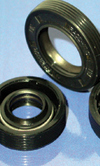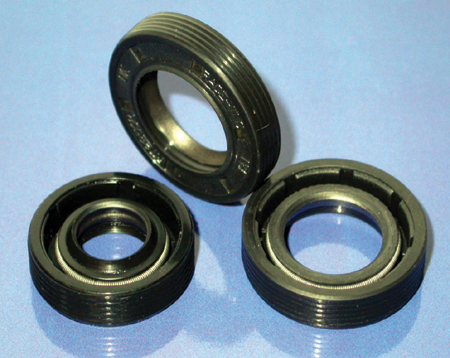The water pump seal
 Time was when the application of the white of a single egg - be that free range or battery, it didn't seem to matter which - was enough to cure that annoying little water leak. Dropped into the top of the radiator, the action of the engine being progressively warmed was sufficient to denature the protein in the albumin and form a thick white mass, sealing the leak or at least sealing it enough to get you home. But with modern critically cooled engines, narrow cooling passageways using minimal amounts of transfer fluid, such practices are best consigned to the memories of old men and heroic tales from the past.
Time was when the application of the white of a single egg - be that free range or battery, it didn't seem to matter which - was enough to cure that annoying little water leak. Dropped into the top of the radiator, the action of the engine being progressively warmed was sufficient to denature the protein in the albumin and form a thick white mass, sealing the leak or at least sealing it enough to get you home. But with modern critically cooled engines, narrow cooling passageways using minimal amounts of transfer fluid, such practices are best consigned to the memories of old men and heroic tales from the past.
But of all the areas in a typical engine cooling circuit, the water pump bearing is probably the most difficult to seal reliably. Almost universally consisting of some form of mechanical face seal, designs of this type can be made up of up to ten separate components.
Although they are complex and often bulky designs, the costs associated with components such as the pump body, the springs, the elastomer bellows, the ceramic faces and clips to hold it all together cease to be an issue when mass-produced, as they can be amortised across the numbers sold. But when bespoke solutions for motorsports applications are needed, mechanical seal designs - despite performing very successfully - become an expensive option.
An alternative explored by one bespoke seal supplier was to use a design based around the traditional radial lip seal, which is more usually found sealing crankshafts or camshafts. The requirements for preventing coolant from escaping from the water pump are in some ways very similar, however, although in others totally different.
So while the elastomers could take care of shaft misalignment - however slight - the PTFE radial lips were found to have a limited life in this new-found environment. In the case of a Formula One seal design, a typical pump speed of up to 10,000 rpm and a coolant pressure of about 7 bar would see the PTFE coating on the lip completely worn through after no more than ten hours on the test rig. With engines having to last four races plus Saturday practice and qualifying, this didn't bode well.

The major problem was that, at the underlip temperatures experienced, the action of the glycol in the coolant and the silicones in the elastomers caused silicates to be formed on the sealing lip. Very hard and highly abrasive, the seal lip rapidly deteriorated as soon as these silicates were formed, a situation compounded by the fact that water itself is a poor lubricant.
After 18 months of development the resulting radial lip design is now surviving for more than 100 hours on the rig running at 14 m/s and a pressure of 5 bar. The manufacturer is of course refusing to give too much detail but it is understood that this twin-lip design uses no form of garter spring and seems to rely wholly on the elastomer for its sealing pressure. As well as being lower in cost and giving a marginal reduction in parasitic drag, with a radial section of only 4.5 mm and an axial width of 6 mm, it is also much smaller than the mechanical seal it replaces.
In preventing leaks it may not be the most dramatic way but when it comes to eggs I now prefer mine on toast.
Fig. 1 - Water pump lip seal
Written by John Coxon